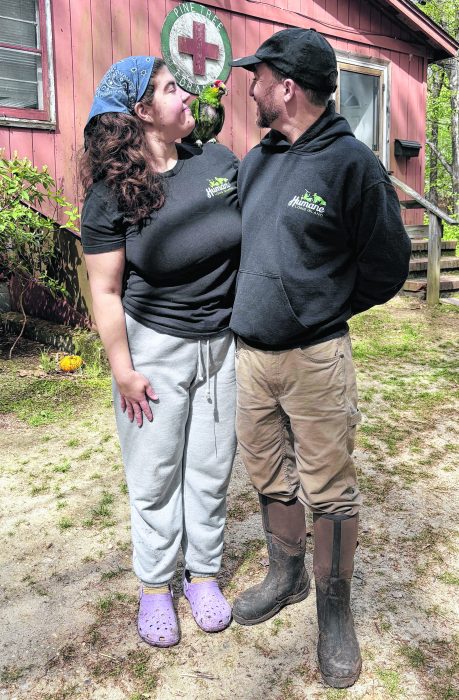Long Island is home to a thriving population of wild rabbits, often spotted in parks, backyards, and wooded areas. However, it’s important to recognize that these wild rabbits are vastly different from their domestic counterparts, which are commonly kept as pets. Unfortunately, many people mistakenly believe that domestic rabbits can survive in the wild if released, leading to a troubling trend of pet rabbits being abandoned outdoors.
Gina Scandariato, R.N.C., a class II wildlife rehabilitator with the New York State Department of Environmental Conservation, explains the distinctions between domestic vs. wild, especially when it comes to their care and handling. “In New York, our wild rabbits are called Eastern cottontails,” Scandariato explains. “You cannot legally own one unless you have a permit for rehabilitation or an educational permit for non-releasable animals due to injury.” She stresses that wild rabbits should never be kept as pets, as doing so can lead to a fatal condition known as capture myopathy. “When wild rabbits are taken from their natural habitat, the stress causes metabolic changes that release toxins into their bloodstream, and sadly, they die quickly,” she says.
While wild and domestic rabbits share biological similarities, their behaviors and care requirements are very different. “Domestic rabbits are incredibly social and thrive on regular interaction. They should never be kept outside, unlike wild rabbits who belong in the wild,” Scandariato says. Domestic rabbits need a carefully monitored diet, including unlimited good-quality hay, pellets, and fresh greens like kale and romaine lettuce. “Contrary to popular belief, they should not be fed carrots, as they contain too much sugar, which can cause gastrointestinal stasis, a potentially fatal condition.”
Unfortunately, many domestic rabbits are abandoned because people underestimate the level of care they need. “Domestic rabbits require space to run, jump, and play, and they cannot survive outside. They lack survival skills and are vulnerable to predators, heat, cold, and parasites like fleas and ticks,” Scandariato explains. For those who can no longer care for a rabbit, she advises reaching out to reputable rabbit rescue organizations, such as All About Rabbits Rescue, or local shelters.
When it comes to health, both wild and domestic rabbits can suffer from similar conditions, including GI stasis, which affects the movement of food through the gastrointestinal system. “If left untreated, the survival rate is very low,” says Scandariato. Domestic rabbit owners may need to find an exotic veterinarian, as many regular vets do not treat rabbits.
For wild rabbits, she advises never attempting to care for one without a license. If you find an injured or abandoned wild rabbit, it’s best to contact a licensed rehabilitator or a wildlife facility. “Never try to feed or give water to a wild rabbit,” Scandariato cautions. “They require very special handling, and improper care can be deadly.”
If you’re considering domestic rabbit ownership, Scandariato compares these companions to a toddler for life. “They need toys, regular socialization, a large, safe space to run and play in, and lots of enrichment. Owning a rabbit can be an amazing experience, but it’s not an easy pet to maintain. They require a lot of time and care. As with any animal, research is key to success.”



































